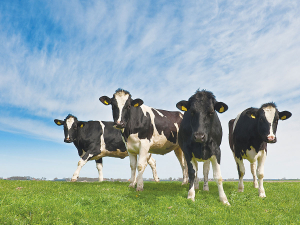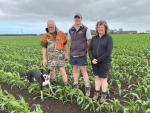Biosecurity isn't just about border control at the airport or ports, writes Nita Harding, DairyNZ technical policy advisor.
Once pests, weeds and diseases are in our country, the border becomes your farm fences and gates, as they can easily be transmitted from farm to farm.
Here are some simple steps you can take to shore up your borders to protect your farm and the animals and plants inside it from a range of risks.
Your farm is an island
A good way to start thinking about biosecurity on your farm is to see your farm as an island, with the boundary of your farm as the border. Ensuring your boundary fences are secure helps to protect your stock, limit contact between your stock and the neighbours, and reduces biosecurity risks. Many farms also limit the number of entry points to the farm so it’s easier to control who’s coming on and off the property through a single entry and exit point.
Clean on, clean off
We encourage farmers to adopt a ‘clean on, clean off’ policy whenever possible. It’s an easy and quick action to provide visitors with a footbath, scrubbing brush and somewhere to wash their hands.
It also helps to encourage visitors to arrive clean and have clean equipment, and then clean off again when they leave so they don’t carry anything to the next farm.
Many farms have a sign-in and sign-out process which provides a record of who’s been on-farm. It also provides an opportunity for you to tell visitors that you’re a biosecurity-aware farm and share any requirements they need to comply with. The more we talk about biosecurity, the more it encourages other farmers and those involved in the farming sector to become more biosecurity conscious.
Traceability is key
Tagging your animals is only half the job. You must also register your animals online and tell NAIT which tags you’ve used.
Farmers need to record and confirm all livestock movements within 48 hours of the animals going off-farm or arriving on farm. If you use an information provider, such as Minda or CRV Ambreed, to record movements in the first instance, OSPRI recommends you check that the livestock movements have also been captured in NAIT. This is critical for effective traceability.
Biosecurity during grazing
If you’re sending calves to grazing, make sure they’re tagged and registered, and that their movements are recorded.
To protect the calves’ health while they’re grazing, check with your vet to ensure all animals have had recommended vaccinations prior to leaving.
You’ll also want to discuss your expectations with your grazier. It’s preferable for animals from different farms to be managed as separate mobs during grazing. Find out more at dairynz.co.nz/biosecurity-at-grazing
It’s also best if mobs from different farms aren’t mixed when being transported to off-farm grazing. For more on how to help protect your farm, business and animals, go to dairynz.co.nz/biosecurity
Key points
❱❱ Think of your farm as an island to prevent biosecurity incursions.
❱❱ Have a clean on, clean off policy.
❱❱ Ensure animal movements are recorded.
❱❱ Talk to your grazier about biosecurity.
• Nita Harding is DairyNZ technical policy advisor.



















